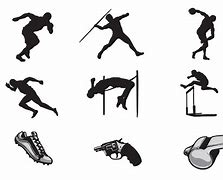Basic Training
Training in distance running is all about making the body work better. It helps improve your health, your cardiovascular system, your breathing, your flexibility and mobility, and your strength. Training is like a journey, it takes you from where you are now to where you want to be in the future. It allows you to reach dreams and goals you never thought possible, and go to places you never thought you would be able to go. With training you will not only improve your race times, you will become fitter, develop a good self-image and greater confidence, and have greater success. It is a great feeling when you are in the best shape of your life.
DO WE JUST RUN ALL THE TIME?
We do a variety of different workouts to mix things up. Some of them have specific purposes. We do have one long run a week mixed with some shorter running. We also do hill workouts, intervals, 2 person relays, Rambo runs, tempo runs, road rallies on foot, clue to clue scavenger hunts, ice cream runs, fartleks, relays, flickerball, ultimate frisbee, freeze tag, sharks and guppies, and much more. These workouts can break up ordinary training.
Training basically has 3 phases in Cross Country. Each has a purpose and guides the runner towards progressing to his/ her full potential.
Phase 3 PeakingPhase |
 |
Phase 2 Intervals / Strength |
|
Phase 1 Building the Base |
Peaking
This phase happens at the end of the season during the most important races when you want to be running your best races. The athlete is in great shape by now. During the phase runners are not in overload training (very hard workouts). The key is rest. They are getting more rest than they did all season long and are sharpening their skills by working on their speed. It is probably the most rewarding phase and seems easy because of the great condition of the athlete and the rest.
Intervals / Strength
By far this is the toughest phase of training. The athlete is training hard to increase his/ her level of fitness. Early in the phase training intensity increases and focuses on preparing the athlete to race. The goal is to maximize the aerobic capacity and increase strength. This is done with hill repeats, tempo runs, intervals, repetitions, and running/ strength drills. Early competition takes a back seat to hard training.
Towards the end of the phase athletes are perfecting racing. The volume drops slightly, but the intensity picks up. There is a greater emphasis on racing, team strategies and pack running. There is slightly more rest and an introduction of speed work. Intervals continue to be the bulk of training with a few added tempo runs. By the end of the phases the runner is in great shape
The phase lasts from about 8-12 weeks.
Building the Base
(The most important phase)
Base training is simply putting in the miles. They can be slow and easy. But a runner has to put in some sort of a base. Near the end of the phase some quicker running may be added. Base training should take place for at least 5-8 weeks. It is done during the summer months. The greater the base the higher the chances of achievement.
Below-average |
Average level of |
Highest level of |
 |
 |
 |
Aug. Base |
July/ Aug. Base |
June/ July/ Aug. Base |
Summer running is obviously important, it is the base training phase. It prepares each athlete for the physically demanding workouts in the up coming season. No athlete would go into a season unprepared without practicing, whether it was basketball, baseball, or cross country. The more you practice the better you get. Most importantly it helps to avoid illness and injury that can come with harder workouts. Summer running even pays off for winter sports and spring sports such as track.
Guide to Summer running
- Take enough time off after outdoor track to be prepared physically and mentally.
- Alternate training. Swim, bike, etc. when running becomes boring.
- Run with others.
- Don't decide to do nothing, you will regret it later.
SUMMER RUNNING IS IMPORTANT FOR SPRING SPORTS?
That's right! An athlete really does not have any other time through the year for base training. Some spring sports may do some base training through the fall, but if you are in a fall sport you don't have that opportunity. And winter is not a great time to put in a base. One, the body doesn't adjust well in winter. Second, winter is usually not cooperative enough to allow an athlete to do the proper training that is needed. Third, Track athletes now compete indoor in the winter. Putting in a base while competing doesn't work. Summer base training has also been proven to have great payoffs in the spring.
WHAT IS A TYPICAL WEEK LIKE?
As a coach I prefer a 2 week cycle. This way I can get in all of the different workouts we need. We will try to go hard every other day, M, W, F, or Tu, Th, Sat. Usually one of these three days of the week is a race day or tempo run. The other two involve a quick interval workout for increasing racing speed, and a longer interval workout to increase breathing ability. There are one to two long runs during the 2 weeks. We also focus on strength exercises and speed/form drills.
The amount of running a runner can handle depends on the person. It depends on ability, previous experience, and maturity. Every runner is different and can handle different amounts of running.
USATF has established a safe volume for young runners and states any runner can handle 20 miles per week. Below is a chart of the highest amounts of running (in miles) an athlete might run in a season. They are not beginning or first week levels, they would be levels that each athlete would work towards attaining.
| Boys | Girls | ||
| Beginners/ New Athletes | Level 1 | 20-25 | 20-24 |
| Beginners/ Athletes in other sports | Level 2 | 25-30 | 24-28 |
| Runners who have done some running | Level 3 | 30-35 | 28-32 |
2nd year runners |
Level 4 | 35-45 | 30-38 |
| 3 rd year / 2 full seasons of running | Level5 | 40-50 | 32-40 |
| 4 th year runners/ 3 seasons of running | Level 6 | 45-55 | 36-45 |
It is important to remember that this is a guide. Each runner is different and unique.
WHAT ABOUT YEAR ROUND TRAINING?
Training of committed cross country runners never stops. They work year round. The foundation of the season is laid in the summer. But it is through consistent training that an athlete has a greater potential level of achievement. Runners who take several months off in a year give up a lot of ground to their competitors. Year round training with periods of rest is the optimal target, however, not all athletes are in both cross country and track, but if they are in another sport they are still in training and not losing conditioning.
Below is a schedule of what a typical year would look like.
June July Aug |
Sept Oct |
Nov Dec |
Jan Feb |
Mar April May |
Preparation |
Competition |
Active Rest/ Transition |
Preparation Rebuild base folowed by Indoor Track |
Competition |
SHOULD I KEEP A TRAINING LOG ORJOURNAL?
Yes, yes, yes. How else can you chart your progress. It helps the coach and the athlete determine what steps need to be taken in training, future progression, and can show patterns of under or over training, injuries, mistakes, or improvements. Journals should at least log the time or distance run, what you did, how hard was it, and how did you feel.
The following is what a typical journal looks like. The link here takes you to another example you may print out.
Training Log
| Week of: | Month: | ||||
| Day | Time/Distance | Intensity | Course/ Comments | Weather | AM Pulse |
| M | |||||
| Tu | |||||
| W | |||||
| Th | |||||
| F | |||||
| Sa | |||||
| Su | |||||


